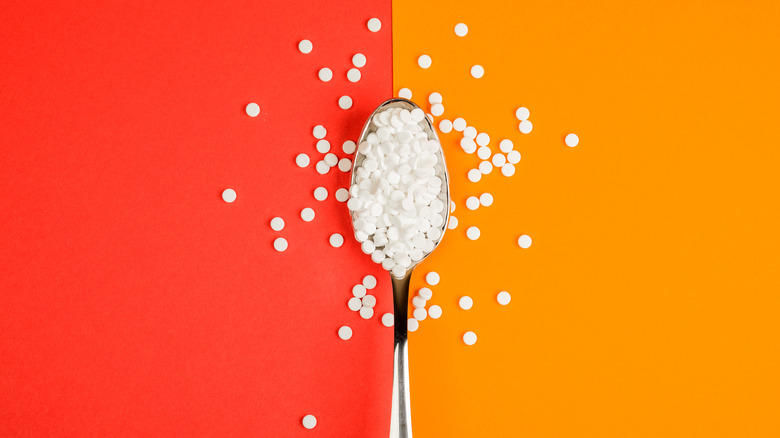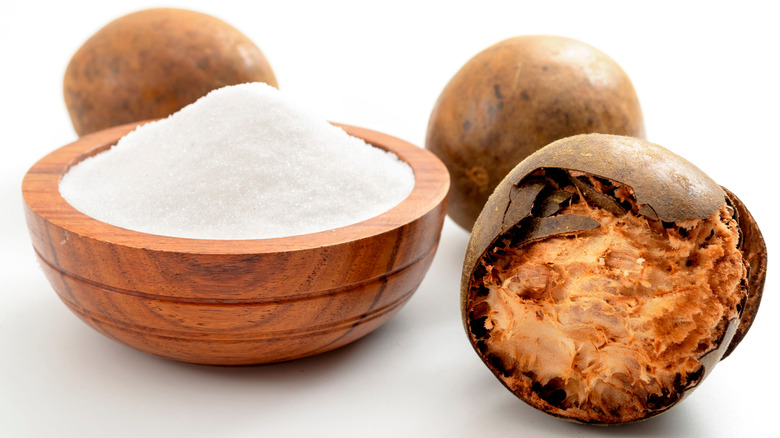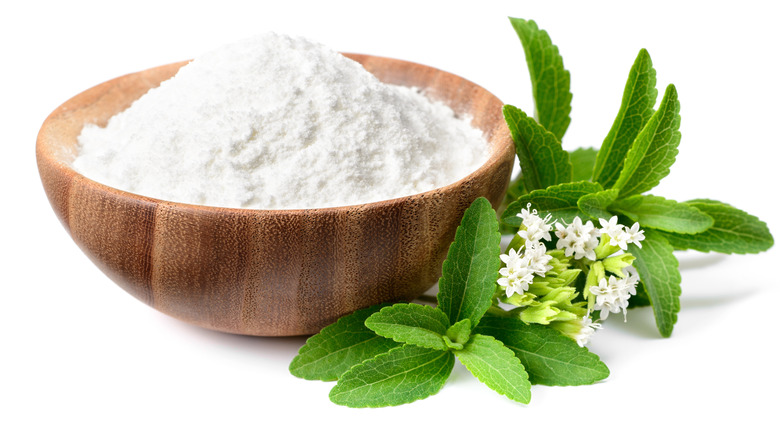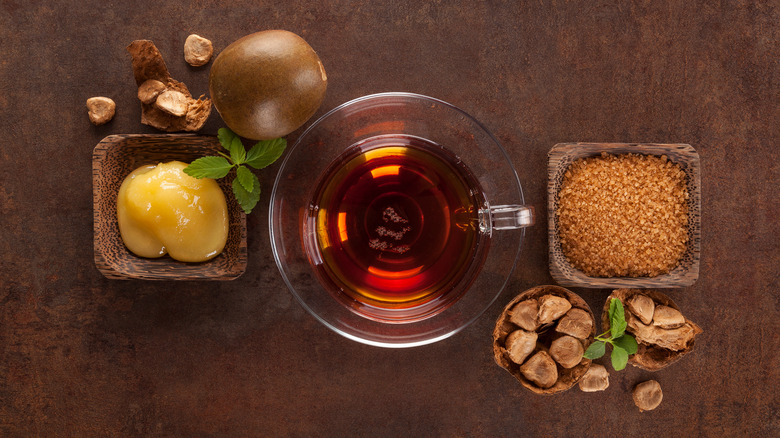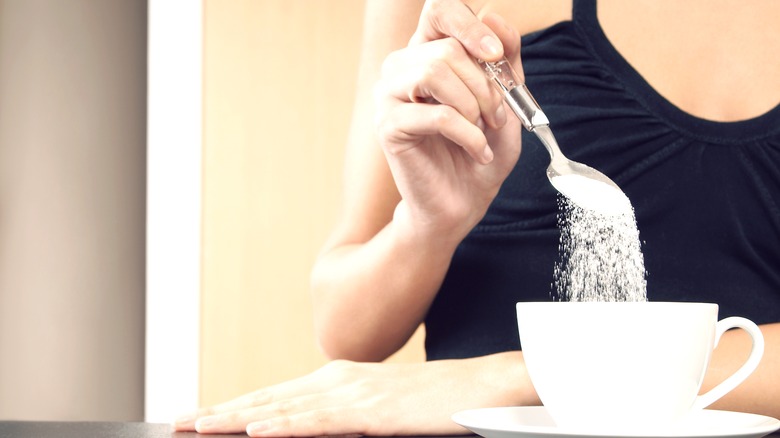Here's How Monk Fruit Compares To Stevia
According to Markets and Markets, the global sugar substitute industry is valued at over $16 billion. Given that sugar is a known culprit in rising obesity rates worldwide, it seems that the industry is trying to meet a demand for a healthier alternative. Not only does excess sugar contribute to weight gain, but it is also often associated with heart disease, diabetes, and cancer. Experimentation and research into sugar alternatives continues, in the hopes of reducing some of the ill health effects stemming from too much sugar.
For a lot of people, sugar has become a habit. As they consume more sugar, its effects become less noticeable, and they must eat more to get the same positive brain response, explains Psychology Today. Sugar substitutes have been designed to appease our need for sweetness without sugar's adverse health outcomes. Sugar alternatives in general may be a positive development, but they aren't all created equal. Two options gaining popularity due to their natural origins are monk fruit sweetener and stevia leaf extract.
What is monk fruit?
Monk fruit is a green gourd from Southeast Asia that gets its name from the 13th century Buddhist monks who first used the fruit, according to Healthline. Today, for the most part, monk fruit's merits aren't appreciated in straight gourd form. Rather, the juice is extracted and crystallized to isolate mogrosides, compounds that are 150-200 times sweeter than sugar while delivering zero calories.
The amount of monk fruit extract needed to sweeten food is so small, suppliers of the sweetener add safe filler ingredients to single-use packages to make them roughly the same sweetness per volume as regular sugar. In addition to the packets that might be used to sweeten a cup of tea or coffee, monk fruit is added to soft drinks, juices, candies, and even baked goods — although pastries made with monk fruit can have a different taste and texture than their sugary counterparts.
What is stevia?
Like monk fruit, stevia also originates from a natural source. It is contained in the leaves of a plant by the same name, found in South America. The Guaraní people native to Paraguay chewed stevia leaves centuries ago for their sweetness (via Body Ecology). The U.S. Food & Drug Administration does not allow natural stevia leaves to enter the country, but it permits processed leaf extract, according to the FDA website. As Healthline explains, the compounds in stevia used to make the sweetener are stevioside and rebaudioside A. Stevia extracts are up to 350 times sweeter than sugar, with zero calories.
The stevioside in stevia has an unpleasant aftertaste that initially limited stevia's wide application as a sweetener. But eventually, food companies were able to isolate and emphasize rebaudioside A, which is sweet without the aftertaste. Mainstream products containing stevia have included Coca-Cola Life, vitaminwater Zero, and Starbucks Refreshers.
Benefits and disadvantages of both
Both monk fruit and stevia have zero calories, which makes them useful in reduced-calorie diets. However, a Healthline article comparing stevia and monk fruit side-by-side points out that monk fruit is sometimes combined with sugar, which can add calories and potentially some of sugar's negative health effects. Stevia is often blended with sugar, too. Coca-Cola Life, for example, is a stevia-cane sugar blend, so it is not calorie-free.
Mogrosides in monk fruit are antioxidants, and stevia contains phytochemicals and other nutrients said to bring some health benefits, per another Healthline article on natural sugar substitutes. Studies indicate that stevia can lower blood sugar, insulin levels, and blood pressure. The antioxidants in monk fruit may have anti-inflammatory properties, but more studies are needed to give us a better understanding of their potential health benefits.
Unfortunately, since monk fruit and stevia aren't widely produced, they are expensive compared to other sweeteners, as mentioned in Healthline's side-by-side comparison of the two. Keep in mind that monk fruit and stevia have distinct flavors different from that of sugar, so they won't necessarily appeal to everyone's sweet tooth.
How to choose between the two
Which sweetener should you use, stevia or monk fruit? Since both are extracted from natural sources, they are on a par in terms of their origins. Artificial sweeteners can have side effects not found in natural stevia or monk fruit. One potential problem with monk fruit, for people who have issues related to making insulin, is that this sweetener can stimulate more insulin production. Healthline says stevia is among the best sweetener options for people with diabetes.
Overall, it can be hard to choose between monk fruit and stevia. As mentioned, both are sometimes combined with sugar, so people with diabetes or those watching their calorie intake need to pay close attention to ingredient lists. Both sugar substitutes are heat stable and can be used in baking, with special care taken not to add too much of these powerful sweeteners. SweetLeaf, a company that makes stevia and monk fruit products, says monk fruit is sweeter, although that may vary depending on who's making it and the exact formulations used. Be sure to price-compare, too. Both stevia and monk fruit are relatively expensive, but one may be more affordable than the other depending on availability in your area.
The choice between stevia and monk fruit might come down to personal taste preference. Give both a try and see what you think.
